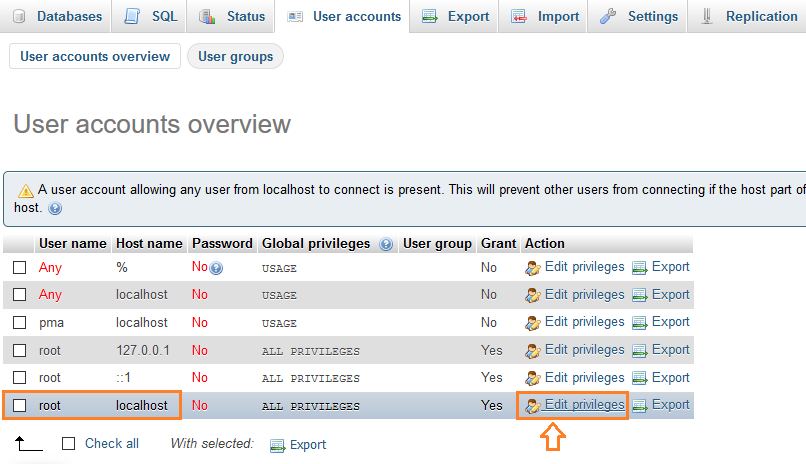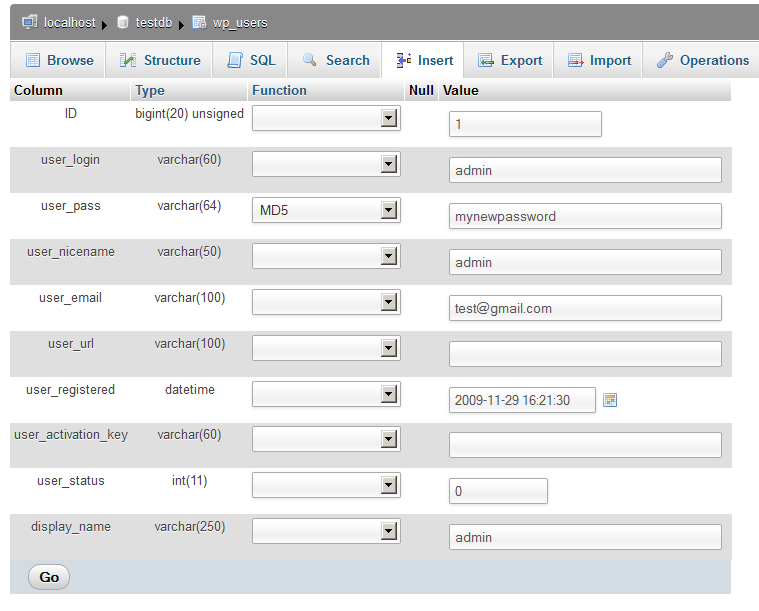
There are several reasons why you might want (or need) to change your MySQL password.
#PHPMYADMIN PASS HOW TO#
In this first example, we’ll see how to insert a new line directly from PHP.Why You Might Want to Change Your MySQL Password

In PHP, there is a pack of functions, starting by mysqli_* that allow you to work with MySQL database. I’ll show you with PHP as it’s the most used language for MySQL, but you can find similar functions in other languages too. You now know almost everything, the only step missing is how to check the used password is correct on sign in. But for my basic table, it’s enough 🙂 PHP You can find the MySQL documentation here if you have any specific thing to handle. Once you have the MySQL Query set for your new users, you can click on “SQL” and paste it directly in PHPMyAdmin.

This query will do the same thing for example: INSERT INTO users So, we just add the “MD5()” function to the password in text, and it will insert a line with a MD5 hash.īy the way, the auto_id field is not mandatory, and will be filled automatically even if you don’t set it to “NULL” in the query. In any case, here is an example: INSERT INTO users If you followed the previous method with PHPMyAdmin, you may have seen the MySQL query displayed on your screen. This should be more convenient than PHPMyAdmin to do this automatically. In this part, I’ll show you how to do the same thing directly in MySQL, but also with PHP. Once done, the lines look like this: The password is correctly encrypted in the field Set a MD5 Password in MySQL and/or PHP directly

The goal is to have an auto-incremented number for each line (you can check the A_I checkbox on the same line to do the same). auto_id – INT(11): I often create a first field like this one.My table will simply be “users”, with three fields:
#PHPMYADMIN PASS CODE#
How to Encrypt Password in PHP with Source Code 2021 | PHP Project with Source Code Free Download Creating a demo tableīefore going further, I’ll create a basic MySQL table to show you how it works.


 0 kommentar(er)
0 kommentar(er)
